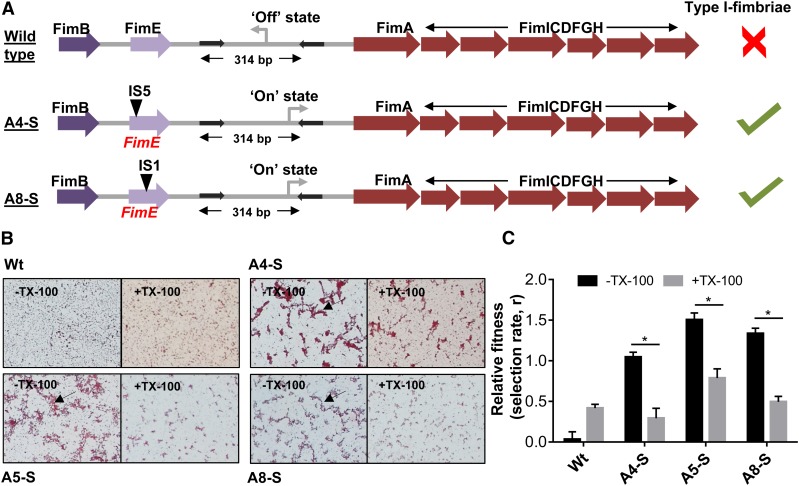Figure 4.
Fimbriation and pellicle formation in A4-S, A5-S, and A8-S isolates contribute to enhanced fitness at low rifampicin concentrations. (a) Schematic representation of genomic alterations at the fim locus resulting in switching “on” of the fim operon in A4-S and A8-S isolates, as inferred from whole genome sequencing data (Table 1). The schematic is not drawn to scale. (b) Microscopic examination of cultures of safranin-stained Wt, A4-S, A5-S, and A8-S E. coli, with or without treatment with 0.01% Triton X-100 (TX-100) for 15 min under 10× magnification. Pellicle formation (indicated by an arrow) was seen in A4-S, A5-S, and A8-S strains, but not in Wt, and was significantly reduced upon detergent treatment. Representative images from three independent experiments are shown. (c) Relative fitness, expressed as selection rate (r), of A4-S, A5-S, and A8-S E. coli calculated in the presence of rifampicin (3 µg/ml) with or without the addition of 0.01% Triton X-100 (TX-100) in the growth media. Mean ± SD from at least three biological replicates are plotted. Statistical significance was tested using a Student’s t-test; *P <0.05.

